Analysis of Mobile Enterprise Model Frame (S&B Model)
The first objective of this paper discusses the writers understanding of Scornavacca and Barnes (2008) mobile enterprise model frame (S&B Model) and an illustration of its current usage and future implementation in the field of existing Patient management system.
The second objective is to discuss the existing implementation of mobile usage in Learning of Life University (LLU) with respect mobile enterprise model of S&B Model with regard to its virtual learning environment in the categories of General student administration, Teaching, learning and assessment and Assessment management and tracking.
In this part the dimension and stages of mobile enterprise model will be discussed and also it relevance to the existing healthcare enterprise. Below is the figure suggested by S&B model.
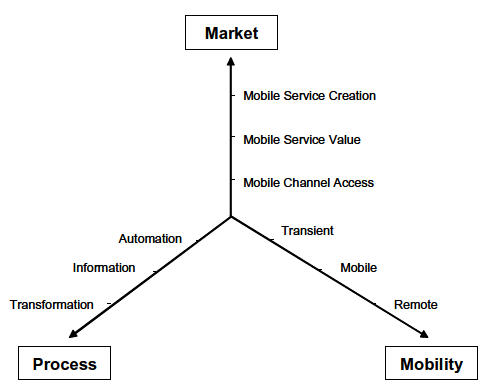
Picture 1: Dimensions & Stages of Mobile enterprise model (Scornavacca, & Barnes 2008)
First let use discuss what the terms Market, Process and Mobility mean in the above figure.
- Market: this describes how a particular feature makes customers of a company or product more attracted towards it which is also known as the value proposition. It may also consist of the experiences of business partners with respect to the product and services.
- Mobile Channel access – it is at the lowest level which represents that mobility is largely being used in the enterprise for information.
- Mobile Service value – it is at the middle level which represents that wireless network is being used at an intermediate level in specific areas to enhance mobility.
- Mobile Service creation – it is at the highest level which represents that an organization is completely using wireless medium to create new service/products and improve it continuously.
- Process: it is the results after the processes and change adopted in the work configuration after moving to mobile application.
- Automation – it refers to the improvement of efficiency in the current existing process after moving to mobile.
- Decision Support – it is the knowledge gained from mobile solution which brings the effectiveness in any work process.
- Transformation – it is the transformation of a process when moved to mobile. As the name suggests it is the organizational processes fundamental change when in mobile medium.
- Mobility: it describes the place independence for a job when moved to mobile which is enabled by wireless internet or a wireless solution which gives mobility to a job.
- Transient – it is the first level where the employees move from one location to another and the basic support they get at the location they move to.
- Mobile – it is the second level where the employees become more location independent for long period of time but still have to return back to a conventional fixed location to carry out certain functions.
- Remote – it is the third and the highest level where an employee need not come to the conventional fixed location at all which provides complete mobility i.e., location independence.
Let us discuss the dimensions and stages in the field of Health care related to Patient Appointment booking system (PABS). As far as now there is very less to nil usage of mobile technology in PABS. According to the writer of this report mobility in PABS can be represented in the mobile enterprise model as shown in Picture 2.
- Mobility: How independent are people/ patients to book an appointment with a doctor/GP through a mobile app using a wireless internet connection.
- Transient – A system where patients can book a doctor’s appointment by visiting the hospital.
- Mobile – A online system where patients can book a doctor’s appointment via conventional computer using an internet connection by sitting in a particular place.
- Remote – A mobile system where a patient can book appointments irrespective of their current location and also pick a time as per their convenience based on the slot availability.
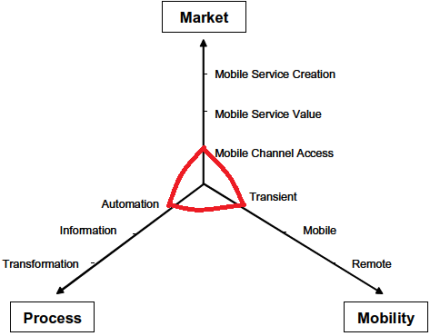
Picture 2: PABS w.r.t S&B model
- Process: How has the patient appointment booking system improved or how is the current situation.
- Automation – If PABS is moved to mobile then patients save ample lot of time which they can invest on some other productive work. It also helps hospitals to hire staff particular for appointments or they can use the existing staff in other administration work. It saves time of both patient and hospital.
- Information – A online PABS can be used by people to book appointments where in hospital can get information about the patient even before they arrive at the hospital.
- Transformation – A mobile PABS is present where in people can book appointments whenever they want by being location independent and having an internet connection. The mobile system can also be transformed when the patient is able to postpone or cancel the booked appointment if needed and that gives out notification for the urgent patients who can mark themselves as urgent if they need such notifications and those newly created slots can be used on the basis of first come first serve or the notification might also be sent based on the criticality or the urgency level.
- Market: How patient appointment booking system increases the value of a hospital, by making it easy for patients to use a mobile system. This stage also shows how new features added to the mobile system would make patients more attracted towards using the application and getting themselves involved with their doctor/GP/hospital.
- Mobile channel access – A mobile system which largely provides only information about the doctor/GP/Hospital without any other services. As it gives only information it is placed at the lowest level.
- Mobile Service value – A mobile system which is present where in patients can book appointments through a mobile application.
- Mobile Service Creation – A mobile system which can be used to book appointments and also many more operations as mentioned in the transformation stage of process dimensions.
Below picture shows the transformation which can be made by the suggestions given in the illustration in PABS.

Picture 3: S&B Model when improved with given suggestions for PABS
REFLECT ON CURRENT SITUATION
Currently Learning of Life University (LLU) uses an electronic student record to keep track of all the new and continuing students and their details including their degree and modules, attendance record and academic performance i.e. results of the modules they study; which seems to be an old method when compared with the current technologies in the market.
Coming to the teaching, learning and assessment part LLU provides notes and assessment online but it will still need the tutors and students to use a traditional computer which will acquire space and also people will need a particular device to use the resources.
Now towards the asset management and tracking of university resources; LLU uses field staff to keep track of the device usage by seeing the usage logs of devices which is a very old method of doing when we have new software’s and sensor devices to do that such as logging software RFID sensors and many more whose data can be accessed by using a mobile device.
Almost all the tasks done by university administration staff is very manual related to keeping track of student records, university assets such as computers, library books etc. So, as a consultant we can represent the current situation of LLU in S&B Model as shown below for the above discussed 3 areas.

Picture 4: LLU’s Current situation with all three areas
Why the company thinks that LLU lies in the above-mentioned area with considering all three areas of study is because all three areas do not have a mobile system where in the students, tutors, administrators or the field staff could do their work without being location independent.
WHY MOVE TO MOBILE AND ITS IMPACTS
As a consultant company, we would like to suggest LLU to use Cloud Computing (CC) which provides educators and learners to access resources form anywhere and at any time. The main advantage of this is that it is low cost for implementation and its infrastructure for LLU.
The rapid changes in e-learning technologies are not being adopted by education institutions due to the infrastructure limitations which are being avoided due to the high cost to use multimedia content which also includes the institutions resources and a tutor’s skills in using a e-learning platform. So, as a consultant company we would like to tell you the advantages and future potential of moving to mobile e-learning platform which includes CC as well which is of low cost.
Mobile devices such as smartphones, tablets etc. can make great benefit of the resources available on cloud. And mobile devices enable the users to access resources such as notes, presentations, assessment guidelines, lectures, tutorials, information about seminars, lab sessions etc. anytime and anyplace. A mobile application will enable the users to access the resources, download it to their mobile device, which will access the cloud when required later, and it makes it easy for students and other staff of LLU as they can use technologies like WiFi or LTE or 3G. It is also to be noted that it would be a big transformation to LLU as well; as CC is a disruptive technology and it will impact education in a very positive manner when utilized. The most important positive impacts when moved to a mobile system with cloud are as follows (Veerabhadram & Conradie, 2013).
- An application on cloud can be used by any number of mobile devices irrespective of the mobile service provider or phone.
- University can avoid the hassle of maintaining the servers and it will be easy for the LLU to scale the application as well and it could concentrate only on the development of a mobile system to access the cloud resources.
- Mobile devices may not have the space required on the device to keep all the resources required so CC can provide good functionality and also determine what data a device can access.
- Mobile devices can be lost or damaged or stolen, but having a cloud infrastructure data can be preserved, as the data is stored on cloud rather than a device or server.
Some of the characteristics of cloud learning are as follows (Wang & W.P. Ng, 2012).
- Universal accessibility – As long as one has internet access via a mobile, tablet, PC, or even TV, Students can study. As all the data, applications, software’s run on servers in cloud it opens to new possibilities to provide low-cost terminal access to everyone.
- Collaborative interactions – From continuous interactions with tutors and fellow students, students can build their knowledge as they can co-operate in cloud anywhere, anytime.
- Sharing and Storing – Documents on cloud can be edited commonly via services like Google Docs, Dropbox, office Live, sky drive and share the same on a cloud server. And cloud also allows to store unlimited data in its storage.
- Learner Centred -Â Students can select the resources they need from cloud and keep track of their progress as well as cloud is learner centric and individual learner needs are met.
As a consultant company, we would like to give a 4 stage Cloud based learning model for LLU based on analysing the three areas of importance (Wang & W.P. Ng, 2012).
- Learning stage – How students learn has evolved from traditional class room to e-Learning to mobile Learning. With this evolution, intelligent learning systems have been developed to support many ways of learning such as e-Books, Audio Books, Video lessons etc. So, at the end of the day it is the choice of the student to pick the mode they want. And to store all these types of resources a smart cloud would be helpful.
- Communication or Interaction stage – for a student to learn something, interaction is very important and it also is very important in mobile learning. It would require instructor and peer collaboration and guidance to stay on track. Cloud based system will also provide a forum where students can interact with their tutors and fellow students where they can share their learning, asking some FAQs and these questions and answers will be stored in a cloud database which can be easily searchable.
- Assessment Stage – This is one of the important stage in a learning process. It ensures that a student has learnt the module and also its outcomes. In the old traditional class room learning; assessment can be done only via a test where as a mobile environment enables various means to assess the learning objectives and outcomes of a student with methods like report-writing, producing an artefact etc., through which a student can be assessed and be helped with their learning outcomes.
- Analysis Stage – With the usual class room it will be impossible to analyse a student’s performance for tutors and recommend them with an appropriate learning materials or methods. A cloud based mobile class room can be used to get statistical analysis of learning outcomes and suggest appropriate learning materials and methods. An analysis of learning methods, styles, activities and behaviours can be done by the tutor to recommend an individual student a proper learning method.
The next problem to solve would be for the administrators to do their jobs, by them being connected to the cloud database of students being enrolled to LLU the administrators need not stick to one place they can move around the entire campus with their mobile device to solve the queries of every student related to their university admissions and many more.
The final problem is of asset management and tracking, as said already that the cloud can store unlimited data, so it will be easy to link LLUs assets to the cloud database and keep track of all the logs and usage statistics and also keep track which use uses which device the more or moreover which asset is more in demand.
Now, let’s discus how the recommended idea from the consultant company underpins the S&B Model with respect to its dimensions and stages of mobility.
- Mobility – As the recommended system is cloud and can be used in any device at any point of time and from any place without location dependence the recommended system would be in Remote stage.
- Process – With the change to cloud tutors, students and administrators can use any device, from any place and at any time to carry out their daily task and it is a big transformation for all.
- Market – With all the changes being made by moving to mobile by creating a new service with a great value a wireless device can be used by students to study, tutors to answer questions and administrators to do their job form anywhere, anytime, anyplace.
RISKS AND ISSUES
Many of the big business companies such as Google and Microsoft are offering free cloud services for educational institutions which gets rid of commercial risk. So, there wouldn’t be any commercial risk but LLU has to maintain the cloud which comes with a price.
Legal, social and ethical issue would be related to securing personal data of the users as it is cloud and security of data is one of the big concern. Strong user authentication system would be a solution for securing user data.
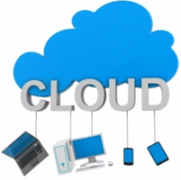
Picture 5: Basic Structure of the recommended Cloud based structure
(Erel, 2014)
Picture 4 shows the Mobile computing architecture with variety of devices which can be used by anyone related to the university to access the university resources via any device of their choice. Providing a proxy for all the mobile devices one can use as shown in Picture 4 such as a laptop, smartphone, tablet is the main goal of the architecture proposed for mobile CC for LLU.
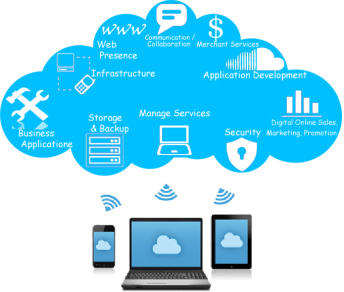
Picture 6: Mobile CC Architecture
(filipdevelter, 2015) & (Cloud services, cloud computing, cloud solutions Mumbai, India, 2016)
Picture 5 gives an overview of the architecture of the mobile CC platform and also cloud’s main features. We can say that the mobile CC consists of three main parts, mobile client i.e. the device we use to access the cloud data, middleware which is responsible to provide access to cloud based on device used and it is also responsible to give instant updates of services to mobile devices and the cloud services.
Minimizing the limitations of present e-Learning in LLU by utilizing the proposed mobile CC system is the main focus, which utilizes all the advantages CC can offer. LLU can use the CC for education which provides all requirements to process and store data, all data needed by students is provided by the cloud, and mobile CC allows the user to use device of their own choice as shown in the picture below.
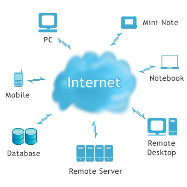
Picture 7: Mobile Cloud Computing architecture for Education
(Veerabhadram & Conradie, 2013)
LAYERS IN CLOUD LEARNING SYSTEM
Information Infrastructure and teaching resources forms the infrastructure layer and it contains internet, software, hardware as shown in Picture 6. It is the lowest layer in the cloud system, CPU is present in this layer i.e. the server. New hosts can be added to enhance the system as the system is scalable and dynamic. Picture 7 depicts it clearly (Masud & Huang, 2012).
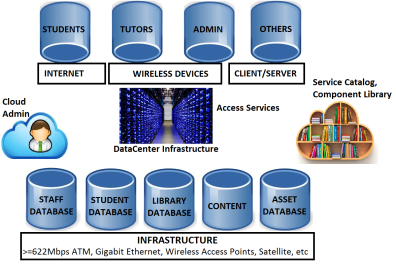
Picture 8: Proposed Infrastructure layer
Software(s/w) layer consists of the operating system of the cloud system and the middleware. Numerous software resources can be integrated into the middleware to provide an interface for s/w developers to develop applications and embed them in cloud for users to use.
Resource layer achieves the coupling of software and hardware. On-demand and s/w for various devices can be integrated by virtualization and CC.
Service layer consists of 3 layers, SaaS (Software as a service), PaaS (Platform as a service), IaaS (Infrastructure as a service). SaaS is the best as it need not be maintained or upgraded, it’s just pay monthly.
Application layer is where the teaching resources are integrated in cloud which also includes interactive courses.
BENEFITS OF CLOUD ARCHITECTURE
- High Storage capacity
- Computing power
- High availability & security
- Virtualisation
Managing and delivering resources from Cloud is one of the most compelling paradigm over the internet. Utility computing has been turned into reality by the rise in CC. Current economic situation and increase in Educational resources have made universities to adopt CC and also there are proofs that the expenses are decreasing due to cloud solutions.
References
(2016) Cloud services, cloud computing, cloud solutions Mumbai, India [online] Available from: http://www.comprompt.co.in/services/cloud-services/. [Accessed: 4 December 2016].
EREL, O. (2014) Important concepts of cloud computing Middleware architecture [online] Available from: http://saasaddict.walkme.com/important-concepts-cloud-computing-middleware-architecture/. [Accessed: 4 December 2016].
FILIPDEVELTER (2015) Back-up maken [online] Available from: http://www.neonomen.be/2015/10/26/een-back-up-is-niet-genoeg/. [Accessed: 4 December 2016].
HAOLIANG, W. et al. (2010) The Application of ID Authentication Safety System in Campus Mobile Education. International Conference on Computer Application and System Modeling. 13. pp. 519-522.
MASUD, A. HOSSAIN & HUANG, X. (2012) An E-learning System Architecture based on Cloud Computing. World Academy of Science, Engineering and Technology. 6.
Ã-STLUND, S., PANCHENKO, A. & ENGEL, T. (2015) A study on ethical aspects and legal issues in e-learning. International Conference on e-Learning. pp. 280-286.
SCORNAVACCA, E. & BARNES, S. J. (2008) The strategic value of enterprise mobility: Case study insights. Information Knowledge Systems Management. 7. pp. 227-241.
VEERABHADRAM, P. & CONRADIE, P. (2013) Mobile Cloud Framework Architecture for Education Institutions. Science and Information Conference. pp. 924-927.
WANG, M. & W.P. NG, J. (2012) Intelligent Mobile Cloud Education. IEEE – Eighth International Conference on Intelligent Environments. pp. 149-156.